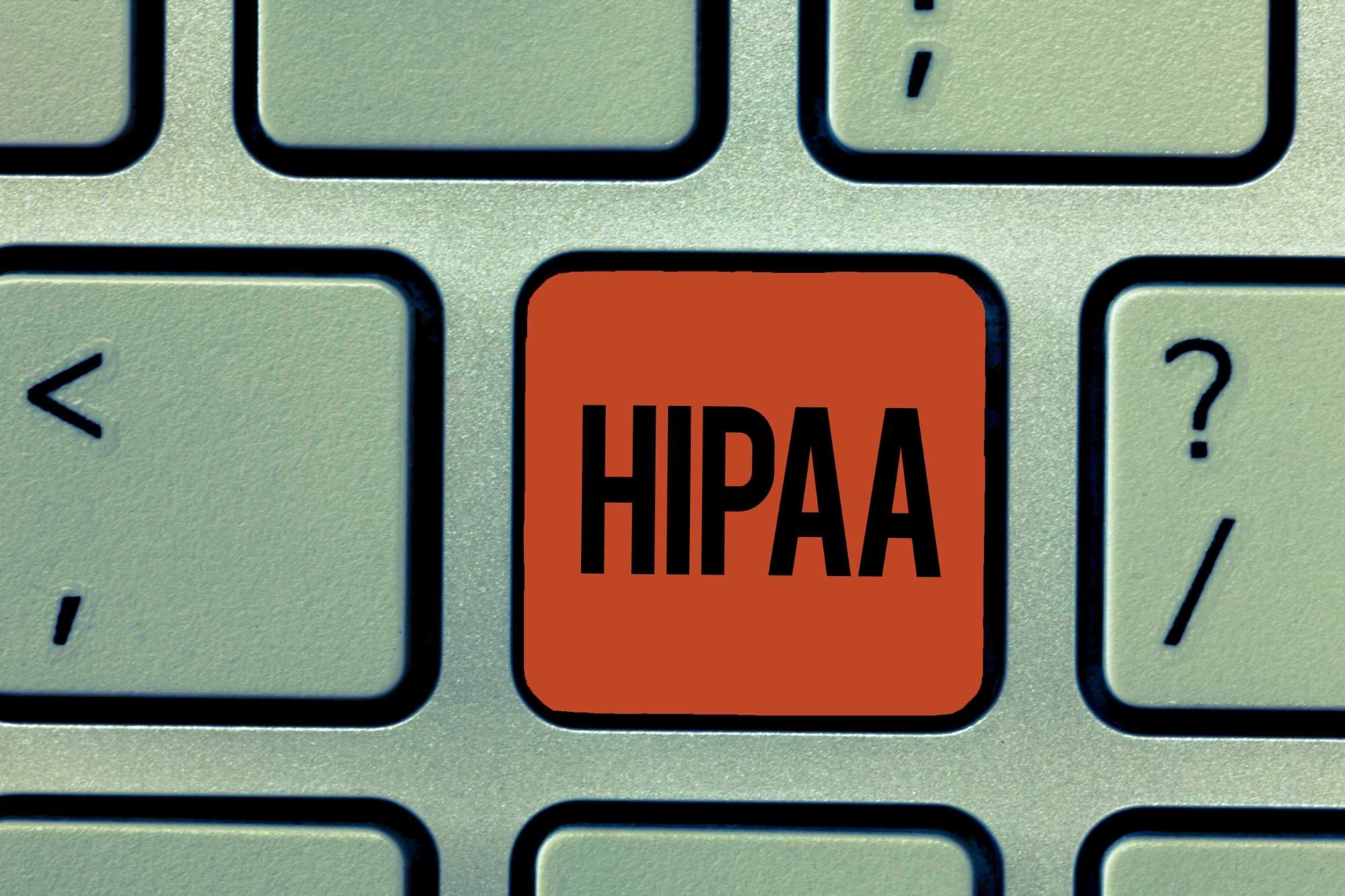It’s Monday morning. You walk into your practice ready for a full day of patients, and every screen flashes the same message: “Your files have been encrypted. Pay $50,000 in Bitcoin or your patient records go public.”
Here’s the thing: many practice leaders believe they’re protected when they’re actually exposed. They’ve invested in compliance training, purchased cyber insurance, and implemented basic security measures. On paper, everything looks good.
But modern cyber threats have evolved far beyond what traditional protection methods were designed to handle – and they don’t stay confined to just your security systems.
When attackers breach one area, the impact spreads rapidly throughout your technology infrastructure, affecting patient data integrity, disabling critical applications, and compromising the very systems that keep your practice running.
There’s an upward trend of healthcare organizations reporting security breaches, and healthcare cybersecurity myths leave dangerous gaps while breaches rise. These myths persist because they feel logical and often come from outdated advice or an incomplete understanding of how cybersecurity actually works in today’s healthcare environment. They create a false sense of security that can be devastating when reality hits.
We’re going to expose seven common healthcare cybersecurity myths that create false confidence. You’ll see why each myth fails against real-world medical practice cyber threats, understand the actual risks you’re facing, and get practical steps to protect patient data with confidence.
Myth 1: “We’re too small to be a target.”
“We’re just 5 doctors. They want the hospitals, not us.”
Practice administrators look at their small team and think cybercriminals are hunting bigger fish. Why would hackers waste time on a modest practice when they could go after major health systems with millions of records?
Small practices are actually perfect targets for medical practice cyber threats. Jeffery Daigrepont from Coker Group explains that hackers are naturally drawn to what they call “soft targets” because “it’s a volume game, they’re kind of lazy. They want soft targets. They want fast and quick hits.”
Tim Grelling from Focus Solutions adds the reality check: “If you’re on the internet, if you have employees that have email addresses, you’re on somebody’s radar because likely those email addresses have been leaked in some sort of breach.”
This myth feels logical, but it’s one of the most dangerous healthcare cybersecurity myths out there. Small practices are actually perfect targets. Cybersecurity experts explain that hackers are naturally drawn to what they call “soft targets” – organizations that offer easy access with minimal security defenses. It’s a volume game where criminals prioritize speed and simplicity over size.
Approximately half of small practices don’t survive a cyberattack. Many are forced to file for bankruptcy or shut down entirely. Even a modest practice operating for 10 years could easily have 100,000+ patient records. At $200 to $300 per record on the dark web, that represents $20 to $30 million in potential value for attackers.
The solution for small practice cybersecurity isn’t to hide. Implement network monitoring and endpoint detection regardless of your size, and consider managed cybersecurity services specifically designed for independent practice data protection needs. Small doesn’t mean invisible to attackers, but it doesn’t have to mean vulnerable either.
Myth 2: “HIPAA compliance means we’re secure.”

“We passed our HIPAA assessment with flying colors. We’re fully compliant. That means we’re secure, right?”
Practice leaders feel confident because they’ve invested time and money into healthcare security compliance. “HIPAA covers security, so we should be protected.” The assessment feels like a security guarantee.
This healthcare cybersecurity myth is particularly dangerous because HIPAA compliance creates such a strong false sense of security. HIPAA’s Security Rule was implemented in 2005 for a much simpler threat landscape. While it includes both privacy and security requirements, the Security Rule takes a flexible, risk-based approach that allows organizations wide latitude in choosing specific security measures.
You can be fully HIPAA compliant and still have weak passwords, unpatched systems, or inadequate monitoring. When breaches happen, basic HIPAA compliance alone may not prevent the incident or fully satisfy regulators if the implemented measures prove inadequate against sophisticated threats targeting independent practice data protection.
Cybersecurity experts see this disconnect regularly. Tim explains that HIPAA’s requirements are intentionally flexible and open to interpretation. The regulation tells you to have processes, policies, and documentation – but it doesn’t care if these measures actually work against real threats. He emphasizes the critical distinction: “HIPAA is designed to be the floor, right? You need to meet this compliance, but that doesn’t mean you’re secure.”
Your practice needs to move beyond compliance checkboxes to stabilize your security posture. Layer modern cybersecurity tools on top of HIPAA requirements. Run real penetration testing, not just compliance audits. Treat HIPAA as your starting point, not your finish line.
Myth 3: “Our data is safe in the cloud.”
“Cloud vendors handle our security, so we’re protected.”
Many practice leaders feel confident about cloud adoption because major providers emphasize their security investments. Relying on these large tech providers feels modern and sophisticated.
This confusion affects small practice cybersecurity decisions every day. Tim points to the core issue: “Understanding who is responsible for what in those environments is the key to this.” The assumption that cloud equals automatic security misses critical gaps in the shared responsibility model, leaving medical practice cyber threats unaddressed.
The contractual reality compounds the problem. Jeffery warns that “your contract probably doesn’t hold them accountable in the event that there’s a breach on their end.” Most cloud contracts limit vendor liability to what you’ve paid them in the previous 12 months, which rarely covers the full cost of a breach.
Your cloud migration was smart, but it needs to be part of an integrated security strategy. Map out exactly what your provider handles and what falls on your shoulders. Audit your configurations regularly, lock down access controls, and monitor user activity across all your cloud applications. The cloud gives you better infrastructure than you could build yourself – now make sure you’re using it securely.
Myth 4: “We have backups, so ransomware can’t hurt us.”
“We back up every night to multiple locations. If something happens, we’ll just restore everything and be back online quickly.”
This thinking relies on decades of experience where backups successfully protected against hardware failures and natural disasters. The strategy feels foolproof for small practice cybersecurity.
This healthcare cybersecurity myth has become increasingly dangerous as attacks evolve. Tim notes that “ransomware has become way more prevalent in the last 10 years. It’s getting worse, it’s continuing to evolve, and it’s difficult to stay in front of these attacks.”
The threat model itself has fundamentally shifted. Traditional ransomware simply encrypted files and demanded payment for decryption keys. Now attackers employ what Tim calls “ransomware plus extortion,” where “even if you didn’t pay, they would send your data out there to embarrass you.” This double extortion means backups alone can’t protect you from data being stolen and publicly released.
Healthcare security should progress beyond basic backups to true operational resilience. Start by securing your data with air-gapped or immutable backups that attackers can’t touch. Next, stabilize your recovery process with regular testing and validated procedures you know actually work.
Finally, build complete business continuity with an incident response plan that covers data recovery, application restoration, infrastructure validation, and keeping operations running during the entire recovery process. The goal is getting your entire practice back online, not just retrieving files.
Myth 5: “Our employees know not to click suspicious links.”

“We’ve trained everyone on phishing. We send out those test emails. Our people know what to look for.”
Annual cybersecurity training feels comprehensive, especially when staff consistently identify obvious phishing attempts during tests. The investment in education creates confidence that employees can spot and avoid healthcare social engineering attacks.
This healthcare cybersecurity myth persists despite mounting evidence that training alone isn’t enough. Modern phishing emails are AI-generated, personalized, and designed to fool even security-conscious professionals.
Even cybersecurity experts can be fooled by increasingly sophisticated phishing attempts that look completely legitimate, and AI technology is making these attacks even more convincing. One click during a busy clinical day can compromise your entire network in minutes.
The scope of the problem is broader than most realize. Jeffery explains that “40% of all compromises actually originate from insider threats.” This doesn’t mean malicious employees – rather, staff members get compromised in their personal lives through social engineering or other attacks, then unknowingly bring that security breach into the practice when they use the same passwords or click on malicious links at work.
The solution for independent practice data protection requires technology that assumes human error will happen. Implement email filtering and zero-trust verification. Use multi-factor authentication everywhere. But most critically, ensure your systems are designed with containment in mind.
When someone inevitably clicks something malicious, proper network segmentation and unified monitoring can prevent that mistake from cascading across all your systems. Plan for human nature, don’t fight against it.
Myth 6: “Cyber insurance will cover everything.”
“We have comprehensive cyber insurance. If something happens, we’re covered financially.”
Many practices view their cyber policy as complete financial protection against breach-related expenses. The premium feels worth it for the peace of mind that recovery costs, legal fees, and regulatory fines will be handled by the insurance company.
Claims can be denied for not having “reasonable” security in place, and policies often contain exclusions that catch practices off guard. Meanwhile, premiums are skyrocketing while coverage requirements increase, creating a double burden for small practice cybersecurity budgets.
Healthcare practices should understand how insurance companies operate. Jeffery draws from industry experience, noting that cybersecurity insurance carriers operate just like traditional health insurers: “They have rules and they will deny and kick back a claim if you do not submit that claim precisely to those rules.” They’re designed to find reasons to avoid paying out claims.
One exclusion catches many practices particularly off guard. Most policies don’t cover employee negligence – meaning if a staff member accidentally introduces a threat, the insurance company considers that an internal issue rather than an external attack they’re protecting against.
Since a significant portion of medical practice cyber threats involve compromised employees who unknowingly introduce threats, this exclusion can severely limit coverage when practices need it most.
The solution for healthcare security compliance requires treating insurance as your last line of defense, not your first. Review your policy exclusions carefully and implement the specific security measures your policy requires.
Build your security posture to prevent breaches, not just to satisfy insurance requirements. When you integrate security across your IT infrastructure, data systems, and applications, you’re not just checking boxes for coverage; you’re actually reducing the likelihood you’ll ever need to file a claim.
Myth 7: “We’ll deal with cybersecurity when we have more budget.”
“Security is important, but we need to focus on growth first. We’ll invest in cybersecurity once we have more resources.”
Here’s what we’ve learned from working with practices: waiting typically costs more than starting now. Prevention is almost always less expensive than recovery. While you’re focusing on growth, cybercriminals are scanning for vulnerabilities, and post-breach security requirements often cost significantly more than proactive measures would have.
The numbers behind this reality are stark. Jeffery has seen this pattern repeatedly – about half of small practices don’t survive a cyberattack, and many are forced to file bankruptcy or shut down entirely. These aren’t just statistics; they represent real practices that thought they could postpone security investments.
The practices that do manage to survive often wish they hadn’t waited. Recovery expenses pile up quickly: forensic investigations, legal fees, ongoing credit monitoring for affected patients, reputation management, and potential regulatory penalties. Even when cyber insurance kicks in, it rarely covers everything, leaving practices with unexpected financial burdens that could have been avoided.
Rather than waiting for the perfect budget moment, think of cybersecurity as foundational to your business growth. Start with high-impact, low-cost measures: multi-factor authentication, employee training, and basic network monitoring. Think of cybersecurity as business insurance in your budget planning. Threats don’t wait for better financial timing, and neither should your protection strategy.
Don’t Let These Myths Leave You Exposed

These cybersecurity myths feel reasonable because they contain some truth. The problem is they can create a false sense of security. When practices finally take a closer look at their infrastructure, they’re often surprised by what they find. Maybe it’s software that hasn’t been updated, devices that aren’t being monitored, or security areas their current provider hasn’t fully addressed.
Your patients trust you with their most sensitive information. That trust goes beyond compliance paperwork. It’s about doing what’s reasonable to protect the data they’ve entrusted to your care.
Healthcare practices need a different approach than these myths suggest. Rather than working with separate vendors for different pieces of your technology puzzle, you need a Unified Partner who brings your Managed IT, Managed Security, and Managed Data together into one seamless foundation.
We don’t just fix problems or stabilize systems – we unify your entire technology infrastructure so it works as an integrated whole, turning your technology into a strategic advantage while keeping your practice secure.
Ready to see what’s really happening in your network? Our infrastructure assessment is designed specifically for healthcare practices. You’ll get a detailed report showing your actual risk level and a prioritized action plan.
Contact us today to protect your practice with partners who understand healthcare.
FAQs
How often should we conduct security risk assessments?
At minimum annually, but that’s just the baseline. Security assessments shouldn’t be a once-a-year checkbox exercise that you file away and forget. They should be living documents that get updated whenever your environment changes significantly. Any major changes – new EMR, acquisitions, new software vendors – should trigger a fresh assessment.
What’s the most important security measure we can implement immediately?
Multi-factor authentication, hands down. It’s the one protection that can save you even when someone clicks on a convincing phishing email. This should be implemented immediately because it provides crucial protection against human error, which affects everyone eventually.
How can we tell if our employees have been compromised?
Look for behavior that doesn’t match normal patterns. For example, an employee logging in at 3 AM when they never work late, or accessing systems from unusual locations. These behavioral anomalies often show up in monitoring before any real damage occurs, and most employees don’t even realize they’ve been compromised.
What should we understand about cloud security responsibility?
Cloud security operates on a shared responsibility model that most practices misunderstand. Your cloud provider handles infrastructure security, but you’re responsible for configuration, access controls, and user management. Understanding this division of responsibilities is crucial. The cloud gives you a secure foundation, but you can still configure it incorrectly and leave your data exposed.
Where can I learn more about Focus Solutions and your healthcare IT services?
We’ve compiled answers to common questions about our approach, services, and healthcare expertise in our comprehensive FAQ section.

